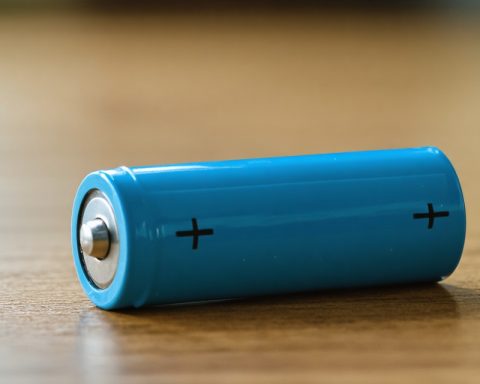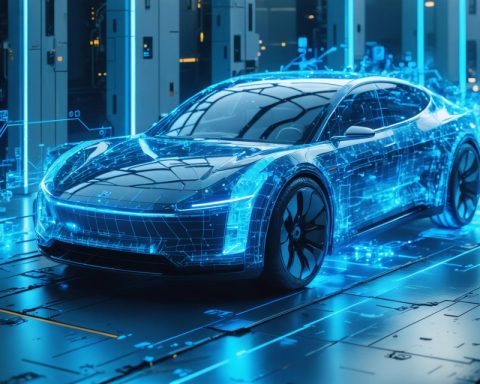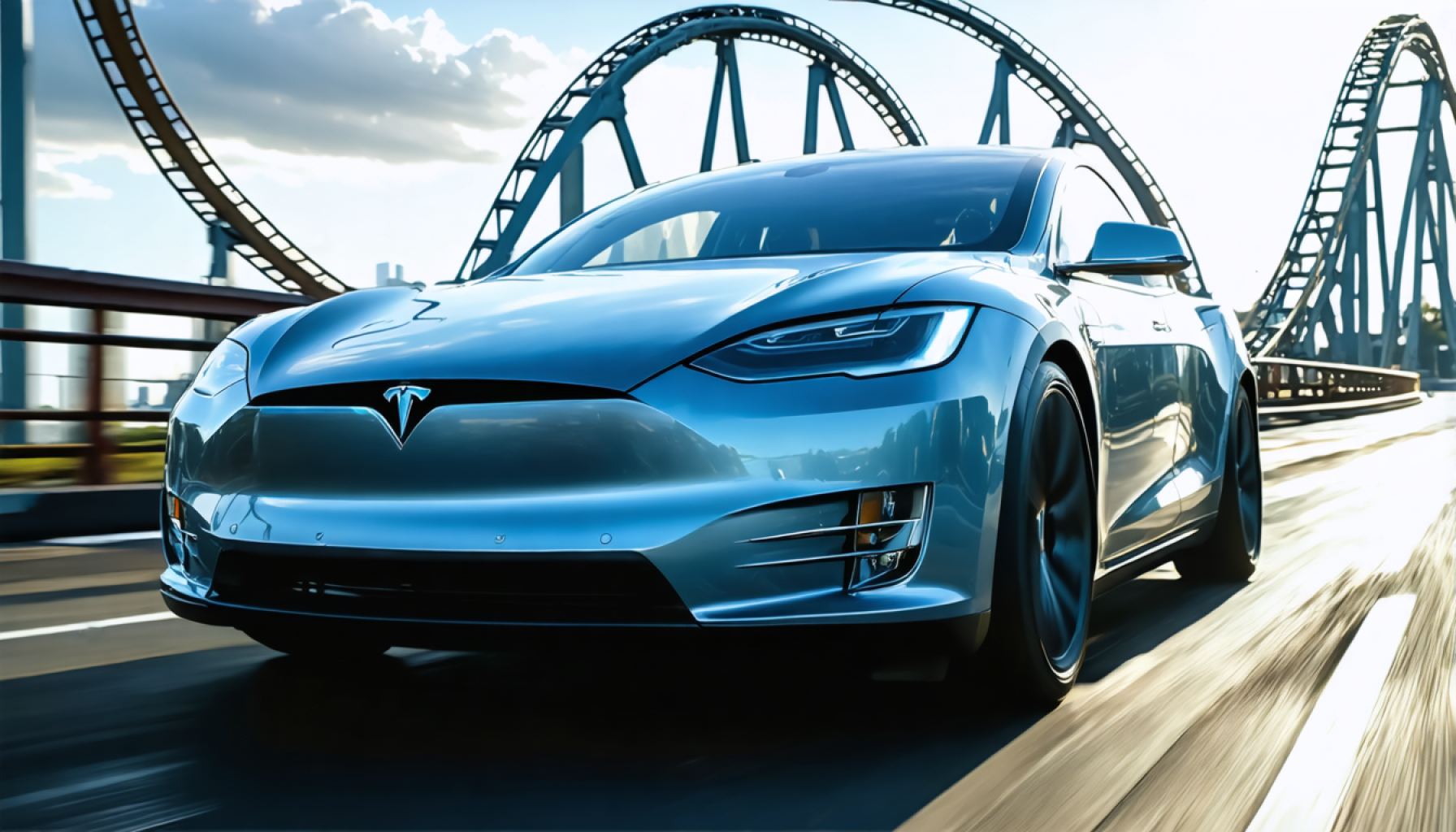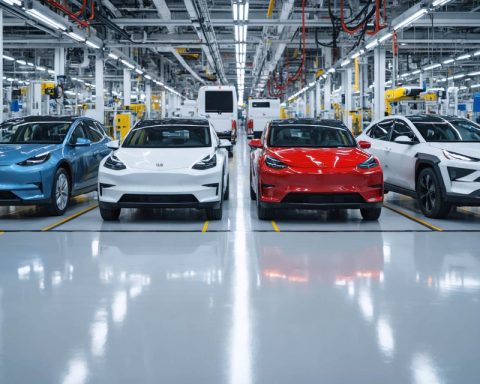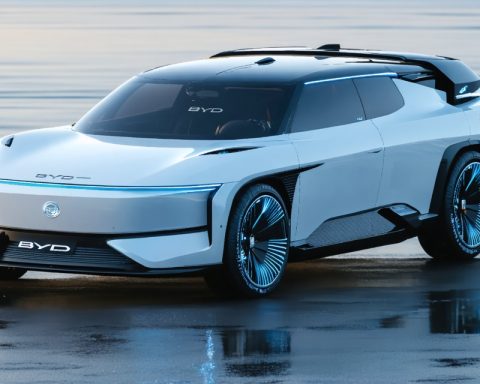- Xiaomi Corp.’s venture into electric vehicles faced a severe setback after a fatal accident involving its SU7 model.
- The vehicle, operating in Navigate on Autopilot (NOA) mode, crashed into a barrier at 97 kph, resulting in a fire and the deaths of three students.
- The incident caused Xiaomi’s shares to drop by 5.49%, erasing HK$70 billion ($8.99 billion) in market value.
- Questions arose about the reliability of Xiaomi’s driver-assistance systems, which require constant human oversight despite featuring FCW and AEB technologies.
- Founder Lei Jun committed to cooperating with authorities, acknowledging the responsibility for maintaining human supervision in Level 2 assistance systems.
- This tragedy underscores the challenges of balancing technological advancement with safety and the need for human intervention.
Xiaomi Corp., known for its rapid ascent in the world of tech, saw its momentum falter as tragedy struck on March 29. The company’s lauded venture into electric vehicles was overshadowed by a harrowing incident involving its SU7 model. The ill-fated vehicle, carrying three university students, careened into a concrete barrier in a construction zone, erupting in flames and claiming all three lives.
This calamity has ignited both sorrow and scrutiny, rippling through the company’s business foundations. The aftermath was swift and severe—Xiaomi’s shares plummeted by 5.49%, a downward spiral that erased nearly HK$70 billion ($8.99 billion) in market value.
The accident, strikingly, occurred while the SU7 was under the influence of its Navigate on Autopilot (NOA) mode. Operating at 116 kph (72 mph), the vehicle encountered a construction-induced lane shift. Despite an alert prompting the driver to assume control, and efforts to decelerate, the vehicle slammed into the barrier at 97 kph.
The blaze that ensued has sparked a myriad of questions, primarily about the reliability of Xiaomi’s driver-assistance systems. While the SU7 is decked out with Forward Collision Warning (FCW) and Autonomous Emergency Braking (AEB), these features failed to account for non-vehicular obstacles—such as traffic cones and concrete blocks. Xiaomi clarified that their systems still demand constant human oversight, firmly placing blame on the need for human vigilance with Level 2 (L2) assistance capabilities.
In the wake of this tragic episode, Xiaomi founder Lei Jun pledged unwavering cooperation with authorities, emphasizing that the company will not shirk responsibility. The vehicle remains in police custody, stalling any direct examination by Xiaomi to ascertain issues that may have exacerbated the catastrophe.
This incident isn’t just a setback for Xiaomi but a poignant reminder of the complexities that lie in the march towards automation. It underlines the crucial intersection between advancing technology and the irreplaceable need for human intervention. As Xiaomi grapples with the fallout, the broader tech and automotive communities are left to ponder an essential question: In the quest for progress, how do we ensure safety doesn’t take a backseat?
As the investigation unfolds, what remains clear is the delicate balance required in the symbiotic relationship between humans and machines. While technology can enhance and augment human capabilities, it is, in the end, our responsibility to ensure its safe and thoughtful deployment in our lives.
New Title: The Dark Side of Automation: Lessons from Xiaomi’s Tragic SU7 Incident
Understanding the Xiaomi SU7 Incident and Its Implications
The tragic accident involving Xiaomi’s SU7 electric vehicle is a stark reminder of the complexities and challenges present in the development of autonomous driving systems. Although technology is advancing at a rapid pace, this incident highlights how the interplay between human oversight and machine autonomy is still critically important.
Key Facts About the Xiaomi SU7 and Autonomous Driving
1. Level 2 Autonomy Limitations:
– The SU7’s Navigate on Autopilot (NOA) mode represents Level 2 autonomy, which requires constant driver supervision. Despite its capabilities like Forward Collision Warning (FCW) and Autonomous Emergency Braking (AEB), the system isn’t foolproof and does not handle complex, dynamic environments like construction zones effectively.
2. Human Oversight Is Crucial:
– While the incident emphasizes the importance of human intervention when using driver-assistance technologies, it also raises questions about the communication and design of these systems in alerting drivers more effectively when intervention is necessary.
3. Liability and Safety:
– Companies like Xiaomi must navigate the legal and ethical landscape of autonomous driving. This incident underscores the significance of clear liability frameworks and the ongoing need for collaboration between tech companies and regulators to enhance safety standards.
How-To: Enhance Autopilot Safety
1. Remain Vigilant:
– Always assume active control, even when vehicles are equipped with advanced driver-assistance systems.
2. Understand Vehicle Limitations:
– Familiarize yourself with the specific capabilities and limitations of your vehicle’s autopilot system.
3. Stay Updated:
– Ensure that your vehicle’s software is regularly updated with the latest improvements and safety features.
Industry Trends and Market Forecast
– Growth of Autonomous Vehicles:
– According to various industry reports, the autonomous vehicle market is expected to grow at a CAGR of over 20% in the next decade. Companies like Tesla, Volkswagen, and Xiaomi are continually investing in improving their autonomous tech.
– Regulatory and Ethical Considerations:
– As autonomous vehicles become more common, regulatory frameworks will evolve to better address these technologies’ safety and ethical aspects.
Pros and Cons of Autonomous Driving Technology
Pros:
– Potential to reduce human error on roads.
– Can manage monotonous driving tasks, improving comfort on long drives.
– Intelligent systems can adapt to traffic conditions, potentially easing congestion.
Cons:
– Current limitations in handling non-standard situations, such as construction zones.
– Over-reliance on technology can lead to complacency among drivers.
– Liability and ethical concerns in accidents and unexpected system failures.
The Path Forward: Actionable Recommendations
– Stay Informed: Keep abreast of any new information or updates regarding your vehicle’s autonomous capabilities.
– Engage in Public Discourse: Participate in discussions and advocacy for balanced regulatory frameworks that prioritize safety.
– Prioritize Education: Encourage initiatives that educate consumers about the proper use and limitations of autonomous systems.
Conclusion
The Xiaomi SU7 incident serves as a poignant juncture in the journey towards autonomous driving. It reinforces the necessity of human vigilance, responsible technology deployment, and ongoing collaboration between industry leaders and regulators to ensure a secure transition towards more autonomous vehicles.
For further insight into Xiaomi’s technology ventures, visit Mi Global Home.


